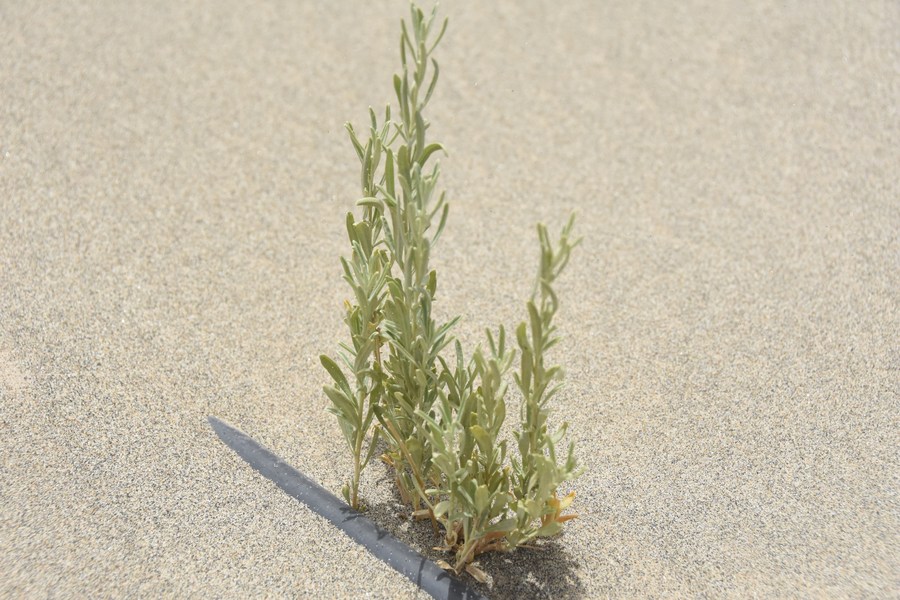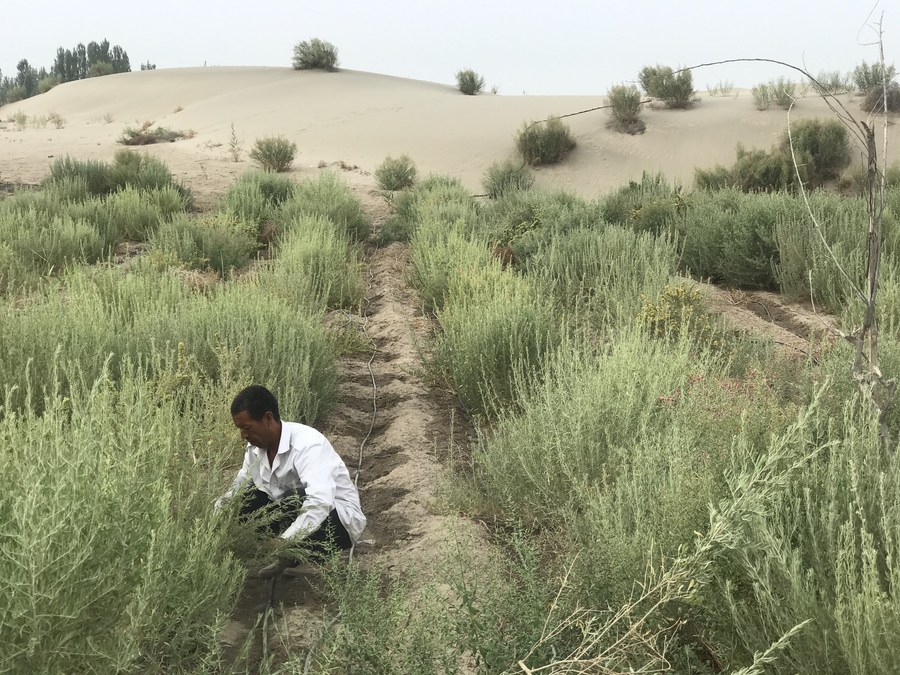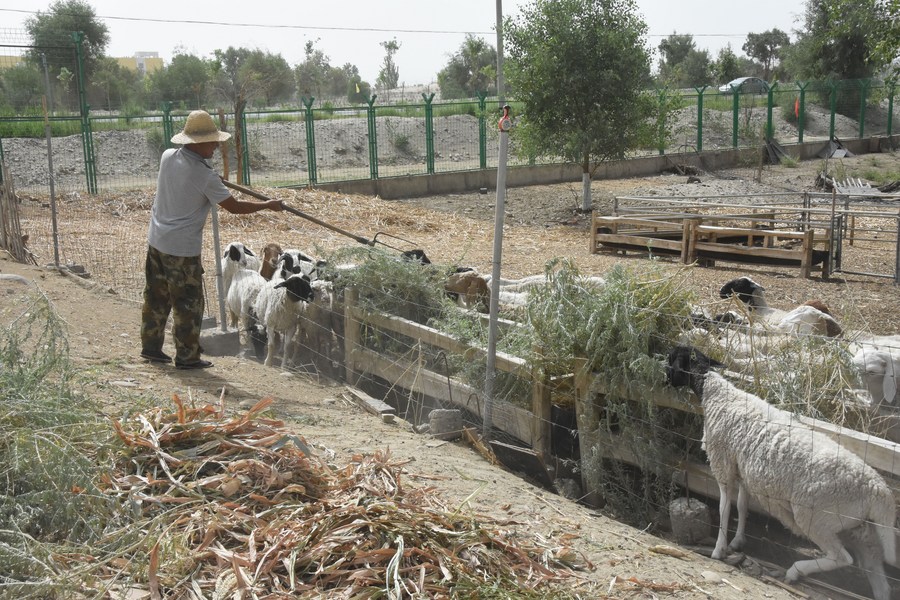
Photo taken on July 8, 2020 shows the four-wing saltbush in a desert in Xinjiang Uygur Autonomous Region, northwest China. (Xinhua/Pan Ying)
URUMQI, July 24 (Xinhua) -- While few plants can withstand the ravages of a desert, a special breed of saltbush is thriving around Taklimakan, China's largest desert located in the southern part of Xinjiang Uygur Autonomous Region.
In the outskirts of Haitiqi Village in Hotan County, Hotan Prefecture, some 50 mu (about 3.3 hectares) of grey-green densely branching shrubs as tall as one meter stand in sharp contrast to the beige landscape.
Known as the four-wing saltbush due to its wing-shaped fruit, the plant, which grows well in saline or alkaline soil, is gaining popularity in south Xinjiang as a desirable choice for desertification prevention and control.
"It also serves as a kind of nutritious feed for livestock," said Memtimin Metiniyaz, a local villager who just collected some four-wing saltbush from the sandy land to feed his 15 sheep. "One mu of four-wing saltbush can feed about five sheep."

Memtimin Metiniyaz collects four-wing saltbush in Haitiqi Village in Hotan County, Hotan Prefecture, July 8, 2020. (Xinhua/Pan Ying)
South Xinjiang is among the country's poorest regions due to its harsh environment characterized by swathes of sandy terrain. Over 60 percent of Hotan Prefecture falls in the Gobi desert.
Raising livestock is a major way many villagers make a living. However, it is becoming less profitable because of the shortage of affordable feed, according to Wang Lizhong, a Beijing official who has stayed in Hotan for about seven years to help boost local development.
"The four-wing saltbush, with remarkable water conservation properties and crude protein content, can improve ecology and economy at the same time," said Wang, who introduced the saltbush in the village as part of the government's efforts to protect environment and fight poverty. "It can kill two birds with one stone."

A herder feeds four-wing saltbush to his sheep in Hotan County, July 7, 2020. (Xinhua/Pan Ying)
Introduced into Hotan in the early 2010s, four-wing saltbush are mushrooming around the Taklimakan Desert thanks to government and private support.
Over 2,000 mu of four-wing saltbush have been planted in Hotan, according to Wang.
The plant is likely to play a bigger economic role as experiments are being conducted in Hotan to use the four-wing saltbush to breed Cistanche deserticola, which grows on other plants' roots. Also known as "Ginseng of the desert," the parasitic plant is used as a local traditional Chinese medicine.
Memtimin plans to raise some camels later this year. "The desert animal can feed on four-wing saltbush and its milk sells well. Hopefully life will take off with the unique plant." ■



